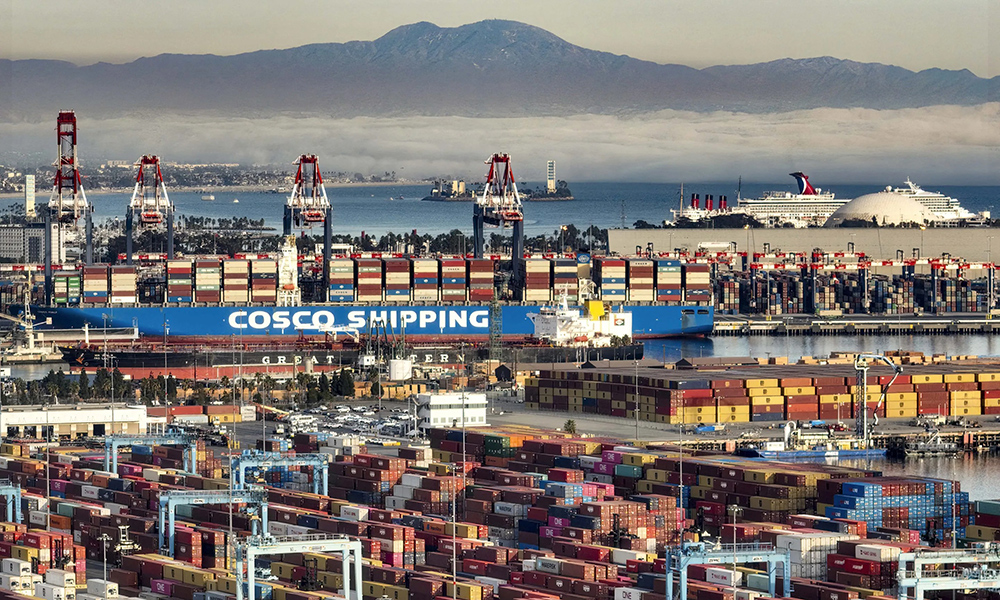
一直以来,代表供应链危机最明显的信号是人们需要等待很长时间才能收到自己买的沙发。目前,供应链崩溃导致人们很难买到医学检测试剂、婴儿配方奶粉,甚至在某些地方人们购买食物也面临困难。
供应链挑战还导致美国出现40年最高的通胀率。一种错误的观点认为,供应链将很快自行恢复正常,这种观点导致美联储没有及时采取措施应对通胀。现在所有人都感觉经济拮据,有人陷入了严重危机。
然而,目前为了应对危机和尽快恢复“正常”所做的努力,可能只会令问题恶化,造成更长期的损害。无论是疫情还是俄乌冲突,都不是当前存在的诸多问题的根本原因。相反,这些冲击只是暴露了数十年来因为供应链复杂性而持续存在的根本弱点。无论对于公司、政策制定者还是全社会来说,想要对供应链进行修修补补,使其恢复到2019年的状态,都不可能成功。
最近用于诊断和治疗心脏病、癌症等疾病的医用染料供应不足,凸显了这个问题。为了最大程度降低成本,许多医院的染料供应依赖一家供应商,但他们并没有考虑到这种单一依赖会导致他们非常脆弱。结果通用电气医疗(GE Healthcare)的一家上海工厂因为疫情停工,导致美国各地的医院出现了供应短缺。其他生产商和医院要满足自己客户和患者的需求,因此拒绝与这些医院共享。医院和医生都试图确认供应短缺将持续多长时间,各地的患者则因此推迟了治疗。
在疫情之初,汽车厂商削减了半导体订单,当时他们也认为这是正确的做法。面对不确定性,通过削减成本维持公司利润,似乎是谨慎之举。然而,他们在削减成本的同时,却让他们所依赖的供应商失去了收入。双方的关系因此受到了伤害,导致半导体产量下降,无法满足汽车厂商的需求。据估计,汽车厂商仅2021年因此付出的代价就高达2,100亿美元,远高于他们所节约的成本。汽车产量下降也是导致2021年通胀快速上升的主要原因之一。
只注重短期效益的行为并不罕见,但今天相互交织的全球化供应链形成了一个复杂的生态系统,如果一家公司被嵌入到这个生态系统当中,这种短视行为的后果将被放大。
系统的复杂性意味着大多数制造商只能了解到一小部分风险。例如,当汽车厂商减少半导体订单时,许多厂商并未意识到半导体厂商能够多快恢复生产规模,结果也低估了他们可能面临的风险严重程度。
这种复杂性还限制了公司合作减少供应链破坏和防止进一步损失的能力。例如,上海工厂在停工后几周内就成功大幅增加了医用染料产量,因此供应并没有受到太大冲击。但由于系统的复杂性,并且每家医院甚至监管部门只能管中窥豹,因此没有人知道或者相信产品供应是充足的。这经常会导致囤货以及其他恐慌反应,只会令问题更加恶化。
为了解决供应链的缺点所做的许多努力,都遗漏了一个宏观的问题:复杂的供应链和不完整的信息如何加剧供应链的脆弱性。结果,一些用意良好的“解决方案”只会适得其反。
例如,许多公司目前尝试解决供应链问题的做法是从供应链转向供应网。如果一家供应商出现问题,从多个地区和公司采购原材料,可以降低风险,但也会增加整个系统的复杂性。系统越复杂只会变得更加不透明,使公司或政策制定者很难及时发现系统漏洞。
多方外包也会削弱供应链各方之间的关系,增加各方合作的难度,而面对疫情、自然灾害或者战争的冲击,各方通力合作通常是减少破坏的关键。当所有供应商同时受到影响时,多方外包无法提供保护。多方外包可能是一个经过深思熟虑的长期解决方案的一部分,是最容易执行的权宜之计,但它也可能让事情变得更糟。
如果说我们从过去几年得到了哪些启示,那就是意外总是会发生,并且会造成伤害。为了确定应对下一次冲击所需要的投资类型和风险管理策略,关键的第一步是认识到当前系统的复杂性,以及这种复杂性如何导致当前的挑战。(财富中文网)
本文作者凯瑟琳·贾奇为哥伦比亚法学院(Columbia Law School )哈维·J·戈德施密德法律教授,著有《直销:中间商经济的崛起与溯源的力量》(Direct: The Rise of the Middleman Economy and the Power of Going to the Source)一书。
本文仅代表作者本人的观点,并不代表《财富》杂志的观点。
译者:刘进龙
审校:汪皓
一直以来,代表供应链危机最明显的信号是人们需要等待很长时间才能收到自己买的沙发。目前,供应链崩溃导致人们很难买到医学检测试剂、婴儿配方奶粉,甚至在某些地方人们购买食物也面临困难。
供应链挑战还导致美国出现40年最高的通胀率。一种错误的观点认为,供应链将很快自行恢复正常,这种观点导致美联储没有及时采取措施应对通胀。现在所有人都感觉经济拮据,有人陷入了严重危机。
然而,目前为了应对危机和尽快恢复“正常”所做的努力,可能只会令问题恶化,造成更长期的损害。无论是疫情还是俄乌冲突,都不是当前存在的诸多问题的根本原因。相反,这些冲击只是暴露了数十年来因为供应链复杂性而持续存在的根本弱点。无论对于公司、政策制定者还是全社会来说,想要对供应链进行修修补补,使其恢复到2019年的状态,都不可能成功。
最近用于诊断和治疗心脏病、癌症等疾病的医用染料供应不足,凸显了这个问题。为了最大程度降低成本,许多医院的染料供应依赖一家供应商,但他们并没有考虑到这种单一依赖会导致他们非常脆弱。结果通用电气医疗(GE Healthcare)的一家上海工厂因为疫情停工,导致美国各地的医院出现了供应短缺。其他生产商和医院要满足自己客户和患者的需求,因此拒绝与这些医院共享。医院和医生都试图确认供应短缺将持续多长时间,各地的患者则因此推迟了治疗。
在疫情之初,汽车厂商削减了半导体订单,当时他们也认为这是正确的做法。面对不确定性,通过削减成本维持公司利润,似乎是谨慎之举。然而,他们在削减成本的同时,却让他们所依赖的供应商失去了收入。双方的关系因此受到了伤害,导致半导体产量下降,无法满足汽车厂商的需求。据估计,汽车厂商仅2021年因此付出的代价就高达2,100亿美元,远高于他们所节约的成本。汽车产量下降也是导致2021年通胀快速上升的主要原因之一。
只注重短期效益的行为并不罕见,但今天相互交织的全球化供应链形成了一个复杂的生态系统,如果一家公司被嵌入到这个生态系统当中,这种短视行为的后果将被放大。
系统的复杂性意味着大多数制造商只能了解到一小部分风险。例如,当汽车厂商减少半导体订单时,许多厂商并未意识到半导体厂商能够多快恢复生产规模,结果也低估了他们可能面临的风险严重程度。
这种复杂性还限制了公司合作减少供应链破坏和防止进一步损失的能力。例如,上海工厂在停工后几周内就成功大幅增加了医用染料产量,因此供应并没有受到太大冲击。但由于系统的复杂性,并且每家医院甚至监管部门只能管中窥豹,因此没有人知道或者相信产品供应是充足的。这经常会导致囤货以及其他恐慌反应,只会令问题更加恶化。
为了解决供应链的缺点所做的许多努力,都遗漏了一个宏观的问题:复杂的供应链和不完整的信息如何加剧供应链的脆弱性。结果,一些用意良好的“解决方案”只会适得其反。
例如,许多公司目前尝试解决供应链问题的做法是从供应链转向供应网。如果一家供应商出现问题,从多个地区和公司采购原材料,可以降低风险,但也会增加整个系统的复杂性。系统越复杂只会变得更加不透明,使公司或政策制定者很难及时发现系统漏洞。
多方外包也会削弱供应链各方之间的关系,增加各方合作的难度,而面对疫情、自然灾害或者战争的冲击,各方通力合作通常是减少破坏的关键。当所有供应商同时受到影响时,多方外包无法提供保护。多方外包可能是一个经过深思熟虑的长期解决方案的一部分,是最容易执行的权宜之计,但它也可能让事情变得更糟。
如果说我们从过去几年得到了哪些启示,那就是意外总是会发生,并且会造成伤害。为了确定应对下一次冲击所需要的投资类型和风险管理策略,关键的第一步是认识到当前系统的复杂性,以及这种复杂性如何导致当前的挑战。(财富中文网)
本文作者凯瑟琳·贾奇为哥伦比亚法学院(Columbia Law School )哈维·J·戈德施密德法律教授,著有《直销:中间商经济的崛起与溯源的力量》(Direct: The Rise of the Middleman Economy and the Power of Going to the Source)一书。
本文仅代表作者本人的观点,并不代表《财富》杂志的观点。
译者:刘进龙
审校:汪皓
For a while, the most visible signs of a supply-chain crisis were people having to wait a long time for a new couch. Today, supply-chain breakdowns are standing in the way of access to medical testing, infant formula, and, in some parts of the world, food.
Supply-chain challenges have also contributed to the highest inflation the U.S. has experienced in 40 years. A misguided belief that supply chains would soon heal themselves contributed to the Federal Reserve falling behind the curve in its efforts to combat inflation. Everyone is now feeling the pinch, and some are downright suffering.
However, the current efforts to Band-Aid over the crises and get back to “normal” as quickly as possible could just exacerbate the problem and cause more long-run damage. Neither the pandemic nor Russia’s invasion of Ukraine has caused the problems that are now on display. Rather, those shocks revealed fundamental weaknesses that had been decades in the making because of the complexity of our supply chains. Patching up supply chains in hopes of returning to 2019 would not be a success, for companies, policymakers, or society.
Recent shortages of medical dyes used to diagnose and treat heart disease, cancer, and other ailments illustrate the problem. To minimize costs, many hospitals became reliant on a single provider for their dyes, yet they failed to understand how that reliance left them vulnerable. As a result, when a wave of COVID-19 infections caused a Shanghai plant of GE Healthcare to shut down, hospitals across the U.S. faced shortages. Other producers and hospitals, concerned about serving their own customers and patients, refused to share. Patients across the country had procedures delayed as hospitals and doctors tried to figure out how long the shortage would last.
Automakers similarly thought they were doing the right thing when they slashed orders for semiconductors at the onset of the pandemic. Cutting costs in the face of uncertainty to buffer their bottom line seemed like the prudent move. However, in cutting their costs, they also denied revenue to the suppliers on which they depend. This harmed those relationships and discouraged production of the semiconductors that automakers need, ultimately costing them $210 billion in 2021 alone, according to one estimate, much more than the amounts they had saved. The dearth of vehicles was also a major contributor to the rapid onset of inflation that year.
Short-termism is nothing new, but the consequences are magnified when a company is embedded in a complex ecosystem of the kind created by today’s intertwining, globalized supply chains.
The complexity of these systems means most producers understand only a fraction of the risks to which they are exposed. For example, when carmakers cut back on semiconductors, many failed to realize how quickly producers would scale back production—and hence the magnitude of the risk they were taking.
This complexity also limits the ability of companies to work together to minimize disruptions and prevent further damage. For example, the Shanghai plant managed to substantially increase medical dye production within a few weeks of its closure, so the total supply didn’t take that big of a hit. But due to the complexity of the system and the fact that each hospital—and even regulators—had only a partial view of it, no one knew or trusted that there was enough stock to go around. This contributed to the usual hoarding and other panicked responses, which just exacerbate the problem.
Many efforts to address supply-chain weaknesses miss this bigger picture: How complex supply chains and incomplete information breed new sources of fragility. As a result, well-intentioned “solutions” could just make things worse.
For example, many companies are now trying to address weaknesses in their supply chains by transforming those chains into webs. Sourcing key inputs from multiple places and companies can reduce the risk should problems emerge with one supplier, but it also makes the overall system far more complex. Introducing even more complexity will only accentuate the opacity that makes it so hard for companies or policymakers to identify vulnerabilities in a timely manner.
Multisourcing can also weaken relationships along the supply chain, making it even harder to achieve the cooperation that is often key to minimizing disruptions in the face of a new shock—be it a pandemic, a natural disaster, or a war. Multisourcing provides no protection against shocks that hit all suppliers simultaneously. While it can be part of a thoughtful, long-term solution, deployed as the most readily available Band-Aid, multisourcing could also make things worse.
If we have learned anything from the last few years, it’s that the unexpected can happen—and it can hurt. Recognizing the complexity of the current system, and the ways that complexity contributed to the current challenges, is the key first step in identifying the type of investment and risk management strategies needed to guard against the next shock.
Kathryn Judge is the Harvey J. Goldschmid Professor of Law at Columbia Law School and the author of Direct: The Rise of the Middleman Economy and the Power of Going to the Source.
The opinions expressed in Fortune.com commentary pieces are solely the views of their authors and do not reflect the opinions and beliefs of Fortune.






